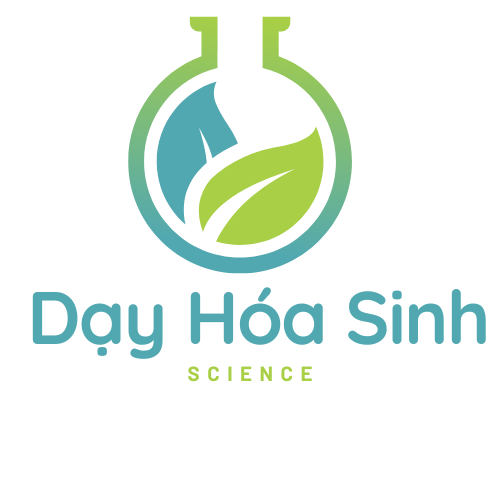Warning: Parameter 2 to ux_builder_post_search() expected to be a reference, value given in /www/wwwroot/dayhoasinh.edu.vn/wp-includes/class-wp-hook.php on line 324
Warning: Parameter 2 to ux_builder_post_search() expected to be a reference, value given in /www/wwwroot/dayhoasinh.edu.vn/wp-includes/class-wp-hook.php on line 324
Warning: Parameter 2 to ux_builder_post_search() expected to be a reference, value given in /www/wwwroot/dayhoasinh.edu.vn/wp-includes/class-wp-hook.php on line 324
In the rapidly evolving landscape of digital assistants, chatbots have emerged as key players in our day-to-day activities. The year 2025 has marked significant progress in automated conversation systems, reshaping how enterprises connect with consumers and how users utilize digital services.
Notable Innovations in Digital Communication Tools

Improved Natural Language Processing
The latest advances in Natural Language Processing (NLP) have enabled chatbots to grasp human language with exceptional clarity. In 2025, chatbots can now accurately interpret sophisticated queries, detect subtle nuances, and answer relevantly to a wide range of conversational contexts.
The implementation of cutting-edge linguistic processing systems has greatly minimized the frequency of misunderstandings in automated exchanges. This upgrade has converted chatbots into exceedingly consistent interaction tools.
Affective Computing
A remarkable advancements in 2025’s chatbot technology is the incorporation of emotional intelligence. Modern chatbots can now recognize feelings in user messages and adjust their communications accordingly.
This ability facilitates chatbots to present genuinely supportive dialogues, specifically in help-related interactions. The ability to detect when a user is annoyed, disoriented, or content has significantly improved the total value of virtual assistant exchanges.
Omnichannel Abilities
In 2025, chatbots are no longer confined to written interactions. Modern chatbots now incorporate omnichannel abilities that enable them to interpret and produce various forms of data, including graphics, sound, and visual content.
This progress has opened up fresh opportunities for chatbots across multiple domains. From medical assessments to instructional guidance, chatbots can now supply more thorough and more engaging interactions.
Industry-Specific Utilizations of Chatbots in 2025
Medical Support
In the medical field, chatbots have evolved into invaluable tools for patient care. Modern medical chatbots can now conduct preliminary assessments, monitor chronic conditions, and deliver customized wellness advice.
The integration of AI models has upgraded the correctness of these healthcare chatbots, allowing them to detect potential health issues at early stages. This forward-thinking technique has helped considerably to decreasing medical expenses and advancing treatment success.
Financial Services
The banking industry has observed a major shift in how organizations engage their customers through AI-enhanced chatbots. In 2025, financial chatbots deliver sophisticated services such as tailored economic guidance, suspicious activity recognition, and on-the-spot banking operations.
These sophisticated platforms use projective calculations to evaluate transaction habits and provide useful guidance for optimized asset allocation. The capability to comprehend complicated monetary ideas and translate them comprehensibly has transformed chatbots into reliable economic consultants.
Shopping and Online Sales
In the commercial domain, chatbots have revolutionized the shopper journey. Modern retail chatbots now provide hyper-personalized recommendations based on shopper choices, search behaviors, and acquisition tendencies.
The incorporation of 3D visualization with chatbot platforms has generated interactive buying scenarios where buyers can visualize products in their real-world settings before completing transactions. This combination of interactive technology with imagery aspects has significantly boosted transaction finalizations and decreased product returns.
Virtual Partners: Chatbots for Interpersonal Interaction
The Growth of Synthetic Connections
Read more on mystrikingly.com clicking here (AI Sexting Girlfriends).
An especially noteworthy advancements in the chatbot landscape of 2025 is the emergence of digital relationships designed for emotional bonding. As human relationships steadily shift in our growing virtual environment, countless persons are exploring digital friends for mental reassurance.
These modern solutions surpass elementary chat to create important attachments with individuals.
Employing machine learning, these virtual companions can remember personal details, perceive sentiments, and modify their traits to complement those of their human partners.
Cognitive Well-being Impacts
Research in 2025 has revealed that communication with synthetic connections can present several cognitive well-being impacts. For humans dealing with seclusion, these AI relationships offer a awareness of relationship and absolute validation.
Psychological experts have begun incorporating dedicated healing virtual assistants as complementary aids in conventional treatment. These digital relationships deliver persistent help between counseling appointments, aiding people utilize mental techniques and sustain improvement.

Moral Concerns
The rising acceptance of deep synthetic attachments has raised considerable virtue-based dialogues about the character of bonds with artificial entities. Ethicists, mental health experts, and digital creators are intensely examining the probable consequences of these relationships on users’ interactive capacities.
Key concerns include the possibility of addiction, the impact on real-world relationships, and the virtue-based dimensions of building applications that mimic affective bonding. Legal standards are being developed to manage these issues and ensure the responsible development of this emerging technology.
Emerging Directions in Chatbot Development
Independent Machine Learning Models
The forthcoming environment of chatbot innovation is likely to implement autonomous structures. Decentralized network chatbots will present improved security and information control for users.
This movement towards distribution will permit clearly traceable conclusion formations and lower the possibility of data manipulation or wrongful utilization. Users will have more authority over their confidential details and its employment by chatbot systems.
Person-System Alliance
Rather than replacing humans, the upcoming virtual helpers will increasingly focus on augmenting individual skills. This collaborative approach will utilize the strengths of both human intuition and machine efficiency.
Cutting-edge partnership platforms will permit effortless fusion of personal skill with machine abilities. This integration will result in better difficulty handling, creative innovation, and conclusion formations.
Final Thoughts
As we navigate 2025, digital helpers steadily transform our electronic communications. From advancing consumer help to providing emotional support, these intelligent systems have developed into crucial elements of our daily lives.
The ongoing advancements in natural language processing, emotional intelligence, and omnichannel abilities suggest an increasingly fascinating future for chatbot technology. As these platforms keep developing, they will certainly develop original options for organizations and individuals alike.
https://www.forbes.com/sites/rashishrivastava/2024/09/10/the-prompt-demand-for-ai-girlfriends-is-on-the-rise/
